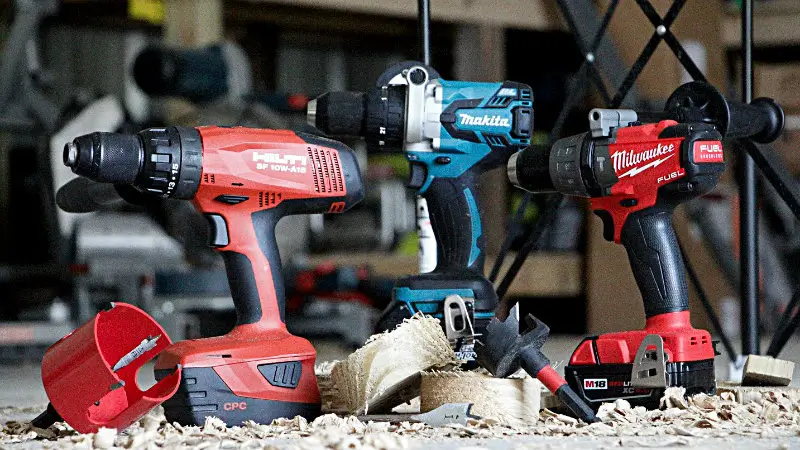A drill is one of the most versatile and useful tools you can have in your home. Whether you need to hang a picture, install a shelf, or make a hole in the wall, a drill can help you get the job done. But with so many types, models, and features of drills available on the market, how do you choose the best one for your needs? In this article, we will guide you through the main factors you should consider when buying a drill, and help you find the perfect tool for your projects.
The most important thing to look for when buying a drill is the power and speed of the drill, which determine how well it can perform different tasks. Power is measured in volts for cordless drills, and in amps for corded drills. Speed is measured in revolutions per minute (RPM), and indicates how fast the drill bit can spin. Generally, the higher the power and speed, the more efficient and versatile the drill is. However, you also need to balance power and speed with other factors, such as weight, size, battery life, and cost.
Types of drills
There are two main types of drills: cordless and corded. Cordless drills run on rechargeable batteries, and offer more mobility and convenience. They are ideal for light to medium-duty tasks, such as drilling wood, plastic, or metal. However, cordless drills have some drawbacks, such as limited battery life, lower power, and higher cost.
You also need to consider the type and capacity of the battery, which affect the performance and runtime of the drill. The most common types of batteries are nickel-cadmium (NiCd), nickel-metal hydride (NiMH), and lithium-ion (Li-ion). Li-ion batteries are the most advanced and preferred option, as they offer longer life, faster charging, and lighter weight.
Corded drills run on electricity, and offer more power and speed than cordless drills. They are ideal for heavy-duty tasks, such as drilling concrete, brick, or stone. They also have unlimited runtime, and are more reliable and durable. However, corded drills have some drawbacks, such as limited mobility, dependence on power outlets, and safety hazards from cords. You also need to consider the length and quality of the cord, which affect the reach and convenience of the drill.
Features of drills
Besides the type, power, and speed of the drill, there are other features that you should look for when buying a drill. Some of the most common and useful features are:
Chuck size and type: The chuck is the part of the drill that holds the drill bit, and its size determines the maximum diameter of the bit that the drill can accept. The most common chuck sizes are 1/4 inch, 3/8 inch, and 1/2 inch. The larger the chuck size, the more powerful and versatile the drill is. The type of the chuck determines how easy and secure it is to change the drill bit. The most common types of chucks are keyed and keyless. Keyed chucks require a special tool to tighten and loosen the chuck, while keyless chucks can be operated by hand. Keyless chucks are more convenient and popular, but keyed chucks are more secure and stable.
Clutch and torque: The clutch is the mechanism that controls the amount of torque, or twisting force, that the drill applies to the drill bit. The clutch prevents the drill from overdriving or stripping screws, and protects the drill and the material from damage. The clutch usually has a number of settings that allow you to adjust the torque according to the task and the material. The higher the number of settings, the more precise and versatile the drill is.
Variable speed and reverse: Variable speed allows you to adjust the speed of the drill according to the task and the material. The lower the speed, the more control and accuracy you have. The higher the speed, the more efficiency and power you have. Variable speed also helps you prevent the drill from overheating or burning the material. Reverse allows you to change the direction of the drill bit, which is useful for removing screws or bits that are stuck.
Hammer action and impact driver: Hammer action and impact driver are special features that enhance the drilling performance of the drill. Hammer action adds a hammering or pounding force to the drill bit, which helps it penetrate hard materials, such as concrete, brick, or stone. Impact driver adds a rotational or twisting force to the drill bit, which helps it drive screws faster and easier, especially into dense materials, such as wood, metal, or plastic.
Conclusion
Buying a drill can be a daunting task, but if you follow these guidelines, you can find the best drill for your needs. Remember to consider the type, power, speed, and features of the drill, and compare different models and brands before making a decision. A good drill can make your DIY projects easier, faster, and more enjoyable. Happy drilling!

